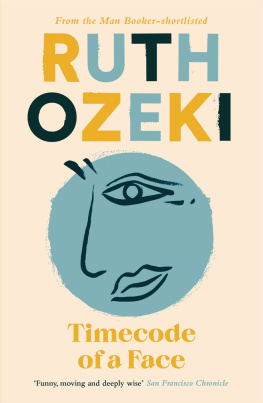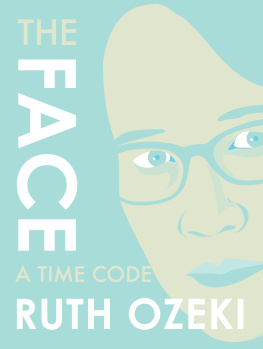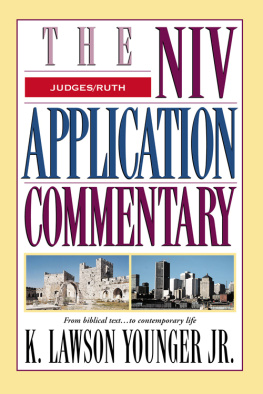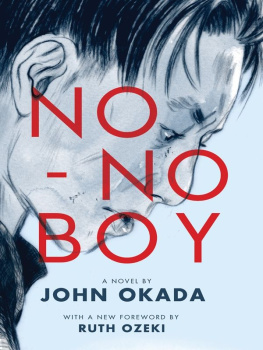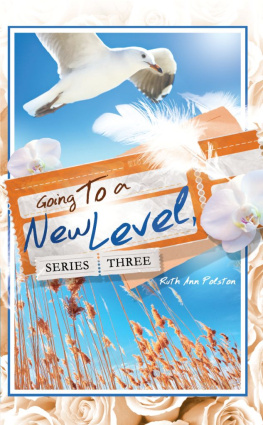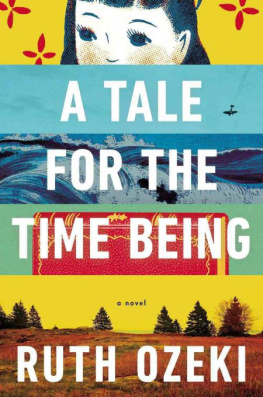Ruth Ozeki - Timecode of a Face
Here you can read online Ruth Ozeki - Timecode of a Face full text of the book (entire story) in english for free. Download pdf and epub, get meaning, cover and reviews about this ebook. year: 2022, publisher: Canongate Books, genre: Art. Description of the work, (preface) as well as reviews are available. Best literature library LitArk.com created for fans of good reading and offers a wide selection of genres:
Romance novel
Science fiction
Adventure
Detective
Science
History
Home and family
Prose
Art
Politics
Computer
Non-fiction
Religion
Business
Children
Humor
Choose a favorite category and find really read worthwhile books. Enjoy immersion in the world of imagination, feel the emotions of the characters or learn something new for yourself, make an fascinating discovery.
- Book:Timecode of a Face
- Author:
- Publisher:Canongate Books
- Genre:
- Year:2022
- Rating:5 / 5
- Favourites:Add to favourites
- Your mark:
- 100
- 1
- 2
- 3
- 4
- 5
Timecode of a Face: summary, description and annotation
We offer to read an annotation, description, summary or preface (depends on what the author of the book "Timecode of a Face" wrote himself). If you haven't found the necessary information about the book — write in the comments, we will try to find it.
Timecode of a Face — read online for free the complete book (whole text) full work
Below is the text of the book, divided by pages. System saving the place of the last page read, allows you to conveniently read the book "Timecode of a Face" online for free, without having to search again every time where you left off. Put a bookmark, and you can go to the page where you finished reading at any time.
Font size:
Interval:
Bookmark:

Guardian



Ruth Ozeki is a novelist, filmmaker and Zen Buddhist priest. She is the author of The Book of Form and Emptiness which won the Womens Prize for Fiction in 2022, My Year of Meats, All Over Creation and A Tale for the Time Being, which was shortlisted for the 2013 Man Booker Prize and translated into 28 languages. Ozeki has also written a short memoir, Timecode of a Face. She is affiliated with the Everyday Zen Foundation and lives in Northampton, Massachusetts, where she teaches creative writing at Smith College and is the Grace Jarcho Ross 1933 Professor of Humanities.
ruthozeki.com
Also by Ruth Ozeki
The Book of Form and Emptiness
A Tale for the Time Being
All Over Creation
My Year of Meats

Authors note: In this memoir, I have chosen not to redact some ofthe racist and offensive language that I was exposed to as a child. Myconcern is that redaction can obscure the harm that language can do.
First published in the UK in 2022 by Canongate Books Ltd,
14 High Street, Edinburgh EH1 1TE
canongate.co.uk
This digital edition first published in 2022 by Canongate Books
Copyright Ruth Ozeki Lounsbury, 2015
The right of Ruth Ozeki to be identified as the author of this work has been asserted by her in accordance with the Copyright, Designs and Patents Act 1988
Digital edition published in the USA in 2015 by Restless Books Inc, New York
First paperback edition published in the USA in 2016 by Restless Books
British Library Cataloguing-in-Publication Data
A catalogue record for this book is available on request from the British Library
ISBN: 978 1 83885 590 1
eISBN: 978 1 83885 591 8
Contents
PROLOGUE: A KOAN
What did your face look like before your parents were born?
I first read this koan when I was eight or maybe nine years old. Someone had given me a little book called Zen Buddhismor perhaps the book had belonged to my parents and Id taken it from their shelves, thinking it ought to be mine. The book was small and slim, the perfect size for a child to hold, but more importantly, it had a friendly face, which made it stand out from the other duller books on my parents shelves. A books face is its cover, and this one, with its simple flowers against a muted orange background, appealed to me. A solid black box in the upper right corner contained the title: Zen. The letters were tall and hand-drawn, in a floaty, white, Art Nouveau font that looked like ghosts, dancing. Beneath, in very small caps, was the word BUDDHISM.
Inside the cover was the subtitle: An Introduction to Zen with Stories, Parables and Koan Riddles of the Zen Masters, decorated with figures from old Chinese ink-paintingsan exceedingly long subtitle for such a small book. It was published in 1959 by Peter Pauper Press, and I know this because I did an online image search for Zen Buddhism small orange book, and there it was, a familiar face, instantly recognizable, looking out at me from my computer screen after more than five decades.
The little book was a talisman, a teacher, a gate. It was filled with gnomic tales of old Zen masters posing paradoxical questions that confounded my nine-year-old notions of rational narrative in a way I found both fascinating and perplexing, and so I assumed they must be profound and very wise.
What is the sound of one hand clapping?
How can one catch hold of Emptiness?
Does a dog have buddha nature?
When there is neither I nor you, who is it who seeks the Way?
Listed like this, these koans might sound clichd, but they were brand new to me. The crazy old Zen masters, with their staffs and whisks and comic antics, who were always slapping and cuffing each other, cutting off their arms and eyelids, and pulling each others ears and noses, seemed to hold a key to my nine-year-old identity.
What is your original face?
I read the koans earnestly, searching for an answer.
TIME CODE 00:00:00
00:00:00 Ive put the mirror on the altar where the Buddha used to be. Laptops just below it. Fussing now with the seating, arranging the cushions. How close should I be? How much proximity can I tolerate? How is the lighting? Flattering? Unflattering? Does it matter? Should I change into a turtleneck to hide the lines on my neck? Hide them from whom? Is the neck even part of the face, and do I need to wash my hair? Do I need reading glasses, or can I type without them? Can I see without them? No, no glasses. No need to look at the computer screen. Just face and me, facing off in the mirror.
00:04:14 Okay. Ready. No, wait, theres dust on the mirror. Must clean it. Do I have vinegar? Yes, under the sink.
00:07:26 Mirrors spotless.
00:08:56 How do I start?
THE EXPERIMENT
The experiment is simple: to sit in front of a mirror and watch my face for three hours. Its a variation of an observation experiment I came across in The Power of Patience,of the observations, questions, and speculations that arise over that time. The three-hour assignment, she admits, is designed to feel excessively long. Painfully is the word she uses, asserting that anything less painful will not yield the benefits of the immersive attention that she seeks to teach. Paintings are time batteries, she writes, quoting art historian David Joselit. They are exorbitant stockpiles of temporal experience and information that can only be tapped and unpacked using the skills of slow processing and strategic patienceskills that our impatient world has caused to atrophy. Shes trying to help her students develop their stunted skill set so they will learn not simply to look at art, but to see it.
My face is not a work of art. There is no reason for me to look at it other than to make sure theres no spinach stuck between my teeth. I rarely put on makeup. My hair seems to take care of itself, more or less. But after reading Robertss article, it occurred to me that a face is a time battery, too, a stockpile of experience, and I began to wonder what my fifty-nine-year-old face might reveal if I could bear to look at it for three hoursa painfully long time, indeed.
My relationship with my reflection has changed over the years. As a young child, I was indifferent to my reflected self. As I grew a bit older, I turned shy and avoided my reflection, but by the time I was a teenager, I was spending lavish amounts of time in front of mirrors, scrutinizing every follicle and pore, and developing a minute and almost microscopic relationship with my surfaces. I dont think I was different from most American teenagers in this way. The compulsive self-regard continued into the early years of my adulthood and then diminished as I aged. Now, although I still check my reflection in shop windows and glance at my face when Im washing my hands or brushing my teeth, I spend very little time in front of mirrors. And yet, over a lifetime it adds up to what? Hundreds of hours? Days or weeks or months even?
Font size:
Interval:
Bookmark:
Similar books «Timecode of a Face»
Look at similar books to Timecode of a Face. We have selected literature similar in name and meaning in the hope of providing readers with more options to find new, interesting, not yet read works.
Discussion, reviews of the book Timecode of a Face and just readers' own opinions. Leave your comments, write what you think about the work, its meaning or the main characters. Specify what exactly you liked and what you didn't like, and why you think so.

